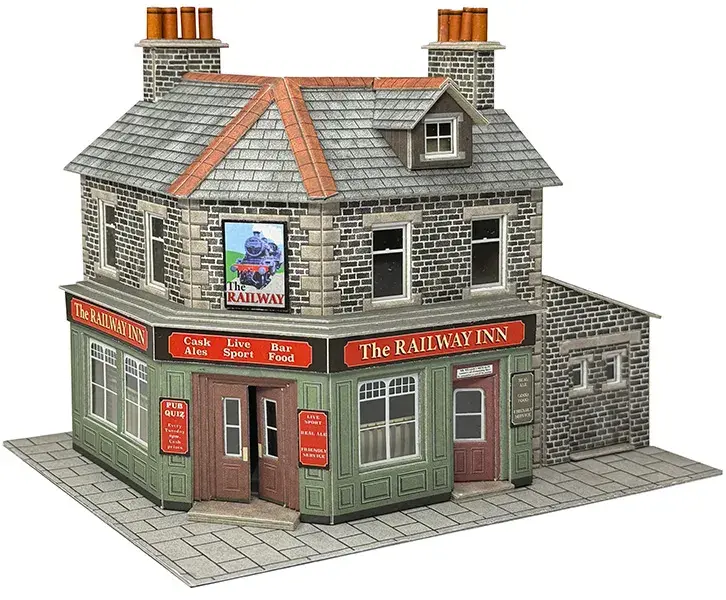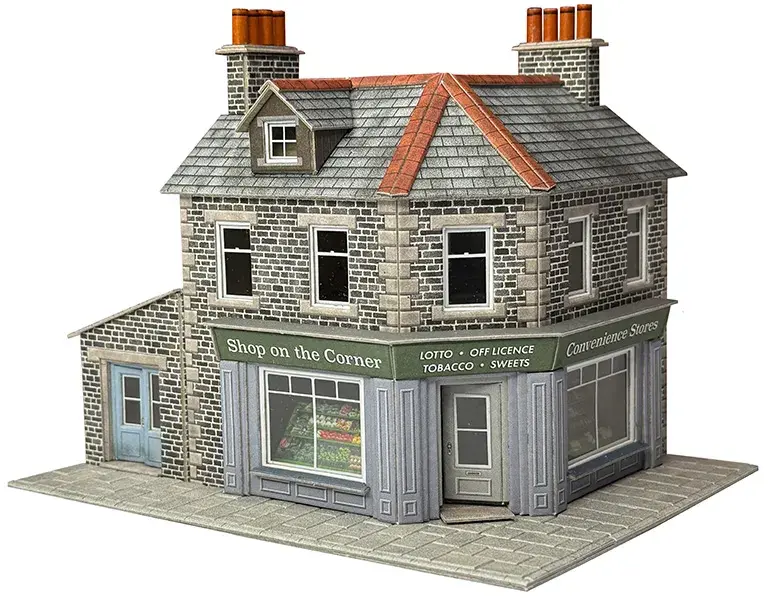Built at English Electric’s Vulcan Works in 1965, this locomotive entered traffic as D6989 on 17th June and was initially allocated to Cardiff Canton depot. It was renumbered to 37289 under BR’s TOPS system in 1974.
In August 1985, the locomotive was fitted with ETH, renumbered to 37408 and repainted in BR ‘large logo’ blue livery as one of 25 that went north to work passenger trains in Scotland. It was named ‘Loch Rannoch’ at Eastfield depot, Glasgow, in September 1986 and adorned with the depot’s white Scottie Dog motif. It is in this livery that the model is presented.
By November 1989 it had transferred to Immingham and the Departmental Civil Engineers’ pool. This was followed by spells in the Trainload Petroleum sector and Trainload Freight West before becoming part of the EWS fleet in 1997. The locomotive was extensively damaged when it ran into parked stock at Rhymney in August 2005 and went into store for component recovery. It was subsequently scrapped at EMR Kingsbury in January 2008.
The model comes fitted with a Next 18-Pin decoder and speaker, meaning it can be run on DCC and with Hornby’s HM7000 Bluetooth-controlled system, which also includes sound via a speaker inside the locomotive.
Given the designation Class 37 under the TOPS classification system rolled out by British Railways in 1973, 309 examples of what until then had been known as English Electric Type 3s, were built between 1960 and 1965.
These locomotives had two bogies, each with six powered wheels, referred to as Co-Co, and a power output of 1,750hp (1,305kW) from their turbocharged V12 diesel engines.
They were designed for freight work, but also for passenger duties on secondary routes, for which many of the class were fitted with steam-heat boilers to warm the passenger coaches. They had relatively low gearing, which was ideal for moving heavy freight trains, yet they were also capable of speeds of 90mph (140km/h) which was equally useful on passenger trains.
Originally numbered D6700-D6999 and D6600-D6608, under TOPS they became Nos. 37001-37308. Although it was an English Electric design and built at its Vulcan Foundry at Newton-le-Willows, a number were also built by Robert Stephenson & Hawthorns in the north-east, the company having become part of English Electric in 1955.
The class 37s were extremely versatile machines and saw service across the whole of the UK, apart from on the Southern Region south of London. In the 1980s, they were selected as a standard Type 3 and many were given overhauls to extend their working lives into the 1990s.
Fitted with Electric Train Heating (ETH) several examples went to Scotland to work passenger services on the West Highland Line and also the Far North Line, while others were deployed on Welsh Marches trains, the Wherry Line in Norfolk, South Wales, the West Country and the Cumbrian Coast line.
Some were given replacement Mirrlees or Ruston engines for a proposed Class 38, but in the event were given the sub-classification 37/9. The locomotives’ relatively low-axle loading for their weight and power, left it as the only main line type available in significant numbers for lines with weight restrictions.
Many are still in use to this day, used mainly on freight, maintenance/engineering trains and empty stock movement, with a growing number finding their way onto charter work with operators such as West Coast Railways. As of 2024, 65 examples were still registered for main line work, plus there are more than 30 that have been preserved in the UK.
BR Class 37 Co-Co Diesel Electric Loch Rannoch 37408
This is a pre-order item. We will take a small deposit for your order now and take the remaining balance when we dispatch your item.



























